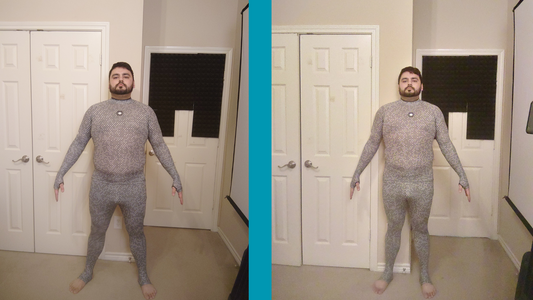

The Connection Between Your Activity Level and Weight Loss
If you are currently on a weight loss plan, or are going to begin pursuing a new fitness routine to help get your health routine, most likely you encountered the phrase “activity level” – whether it came up during a conversation with a medical professional, in a chat with a friend or loved one, or you probably encountered it if you ended up heading down a fitness research rabbit hole on the Internet.
While activity level seems like a self-explanatory term, there are a lot of things to consider about what that phrase means and how it factors into all the decisions you make as you set out to lose weight. ZOZOFIT takes a look at the connection between weight loss and your activity levels here.
What Are Activity Levels?
The term activity level generally refers to the hours that you spend performing significant physical activity every day. In the fitness world, activity level is more of a shorthand phrase than an official metric so that you can monitor how much movement you are including in your daily routine. and how it might impact your overall health and wellness. There are three basic categories of activity levels:
Sedentary: The sedentary activity level includes only the most basic of activities, like everything you do in your day-to-day life (walking the dog, running errands, using the stairs in your house, or playing with your kids). This level of activity does not include any vigorous physical activity at all.
Lightly Active: The lightly active activity level includes everything involved with the sedentary level as well as an additional amount of physical activity, typically movement that is the equivalent of 30 minutes of walking per day at a rate of four miles per hour.
Moderately Active: For those who are considered moderately active, they are consistently engaging in 30 to 60 minutes of moderate physical activity nearly every day of the week. This level of activity involves exercises that are typically more vigorous than the lightly active rate of four miles per hour.
Very Active: To be part of this most active category, individuals are performing five or more hours a week of strenuous activity. Very active people tend to have scheduled workouts on most days of the week as they have fully integrated fitness into their overall lifestyle. Working out is just as much of a part of their daily routine as brushing their teeth or going to work.
Why is Physical Activity Important for Weight Loss Goals?
While everyone’s health is unique and we all potentially have outlying factors that impact how our bodies respond to weight and fitness strategies, studies have shown that being excessively overweight can be damaging to our wellness, regardless of circumstances, on a long-term basis. According to the Centers of Disease Control and Prevention (CDC), obesity rates in adults have recently skyrocketed in the United States in recent years. As of 2017, the obesity prevalence rate in the U.S. was reported to be at 41.9 percent.
Some of the obesity-related health conditions include heart disease, stroke, type 2 diabetes, and certain types of cancer. These conditions are among the leading causes of preventable or premature death for adults in the United States.
For those who have to contend with obesity-related health issues, reviewing and making changes to their activity level is one of the best approaches to use when first embarking on a weight loss journey. While it may not be highly scientific, your activity level is still an important metric to utilize when making decisions about your personal fitness.
Medical professionals have stated that incorporating regular physical activity into your lifestyle can provide both immediate and long-term health benefits for everyone. Some of the benefits of being physically active include:
- Improve your mental health
- Enhance your digestion
- Strengthen your bones and muscles
- Improve your sleep quality
- Reduce high blood pressure rates
- Reduce the risk for long-term detrimental health conditions
How Much Exercise Do I Need to Do to Lose Weight?
When you are trying to lose weight, it’s always important to remember that the more your physical activity increases, that means that the number of calories that your body is using for energy will increase as well. As you burn calories through different physical activities, when you combine that collective exercise with reducing your caloric intake, this will create a calorie deficit that should result in weight loss over time.
Decreasing the amount of calories you are consuming will positively impact your weight loss goals, but the best way to make sure you are doing everything that you can is to engage in regular physical activity. Many fitness professionals recommend engaging in some form of aerobic exercise at least three times a week for a minimum of 20 minutes per workout. Even if you are able to incorporate just 15 minutes of moderate intensity exercise into your routine will be hugely beneficial, as that can help you burn more calories every day.
For example, if you set out to burn 700 calories a week, that can result in 10 pounds of weight loss in just one year. And when you increase those numbers, you’ll be able to lose weight more easily and see the results of your efforts over time.
One thing to keep in mind when it comes to losing weight and changing your composition is that everyone’s body is different. What this means is that the exact amount of exercise that is needed to not only lose weight but maintain your goal weight over time can vary greatly from person to person. Factors such as metabolism, hormones, stress, or medications can impact how your body responds to your workouts. This is why improving your activity level and establishing a healthy eating routine in tandem will make the most impact on your overall health.
Monitoring Your Weight Loss With ZOZOFIT
As you look to improve your activity level so that you can achieve your weight loss goals, be sure to monitor your progress with the cutting edge ZOZOFIT app. With ZOZOFIT’s technology, you can create a 3D body scan using your smartphone in less than two minutes. The app also features several other tools to help you stay on track with your fitness goals, like body fat percentage calculations, side-by-side scan comparisons, our ColorMetric visualizer, and more.

![zf-w-[168px] zf-h-[40px]](http://zozofit.com/cdn/shop/t/15/assets/logo-desktop.png?v=117713855448369080381753069598)




